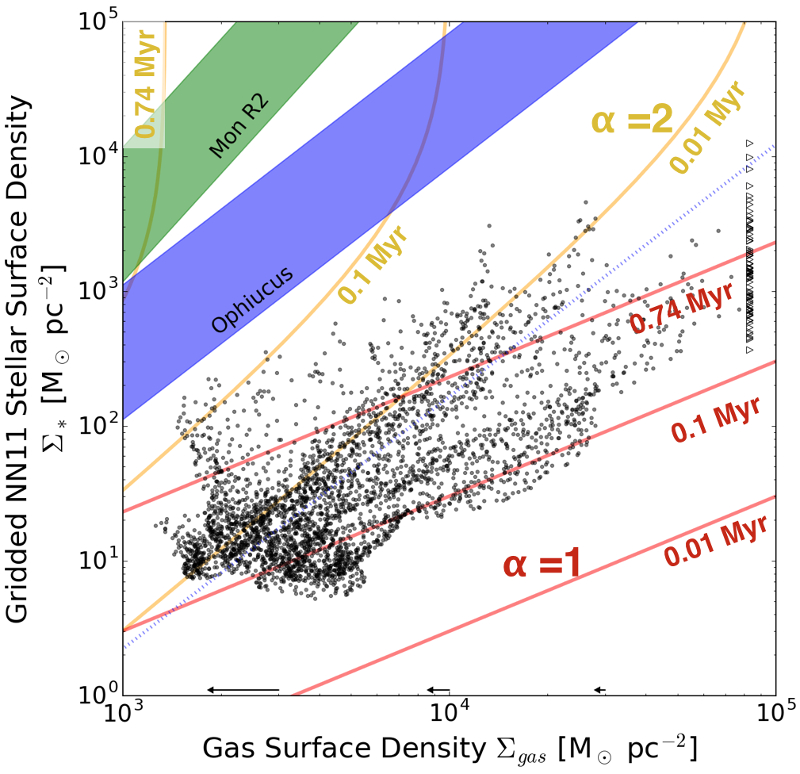
|
EPoS |
|
EPoS Contribution
|
|
Star Formation Laws Evaluated at our Galaxy's Highest Density
Adam Ginsburg NRAO, Socorro, US | |
| Empirical star formation laws describe how gas density relates to the star formation rate (SFR). Most direct comparisons between the SFR using direct star counting have been made in local clouds within 1 kpc of the solar system, in clouds whose column densities span a narrow range from ~1-100×1021 particles cm-2. I will present a direct measurement of the star formation rate from protostar counts in the Sgr B2 molecular cloud, the most massive and dense cloud in our Galaxy. We found that the SFR is inconsistent with simple extrapolations from local clouds and with the threshold-based laws that can explain local clouds. Instead, either a higher threshold or a different law explains star formation in the Galactic center. These star-counting measurements at higher densities will help connect our understanding of Galactic and extragalactic star formation. | |
 | |
| Caption: Plot of the stellar surface density vs the gas surface density in the Sgr B2 cloud. The green and blue curves show extrapolations of the best-fit models from the Mon R2 and Ophiucus clouds in Gutermuth et al 2011; they are extrapolations because the lowest surface density detected in Sgr B2 is greater than the highest detected at a similar resolution in local clouds. The red and yellow curves show star formation relations with SFR ~ Σgas1 and SFR ~ Σgas2, respectively, at three different ages as labeled. The SFR ~ Σgas2 relation was adopted as the best fit to local clouds, but it fails to explain Sgr B2 at any reasonable age. | |
| Collaborators: J. Bally A. Barnes N. Bastian C. Battersby H. Beuther C. Brogan Y. Contreras J. Corby J. Darling C. De-Pree R. Galvan-Madrid G. Garay J. Henshaw T. Hunter J.M.D. Kruijssen S. Longmore F. Meng E.A.C. Mills J. Ott J.E. Pineda A. Sanchez-Monge P. Schilke A. Schmiedeke D. Walker D. Wilner |
Key publication
Suggested Session: Galactic-scale star formation |